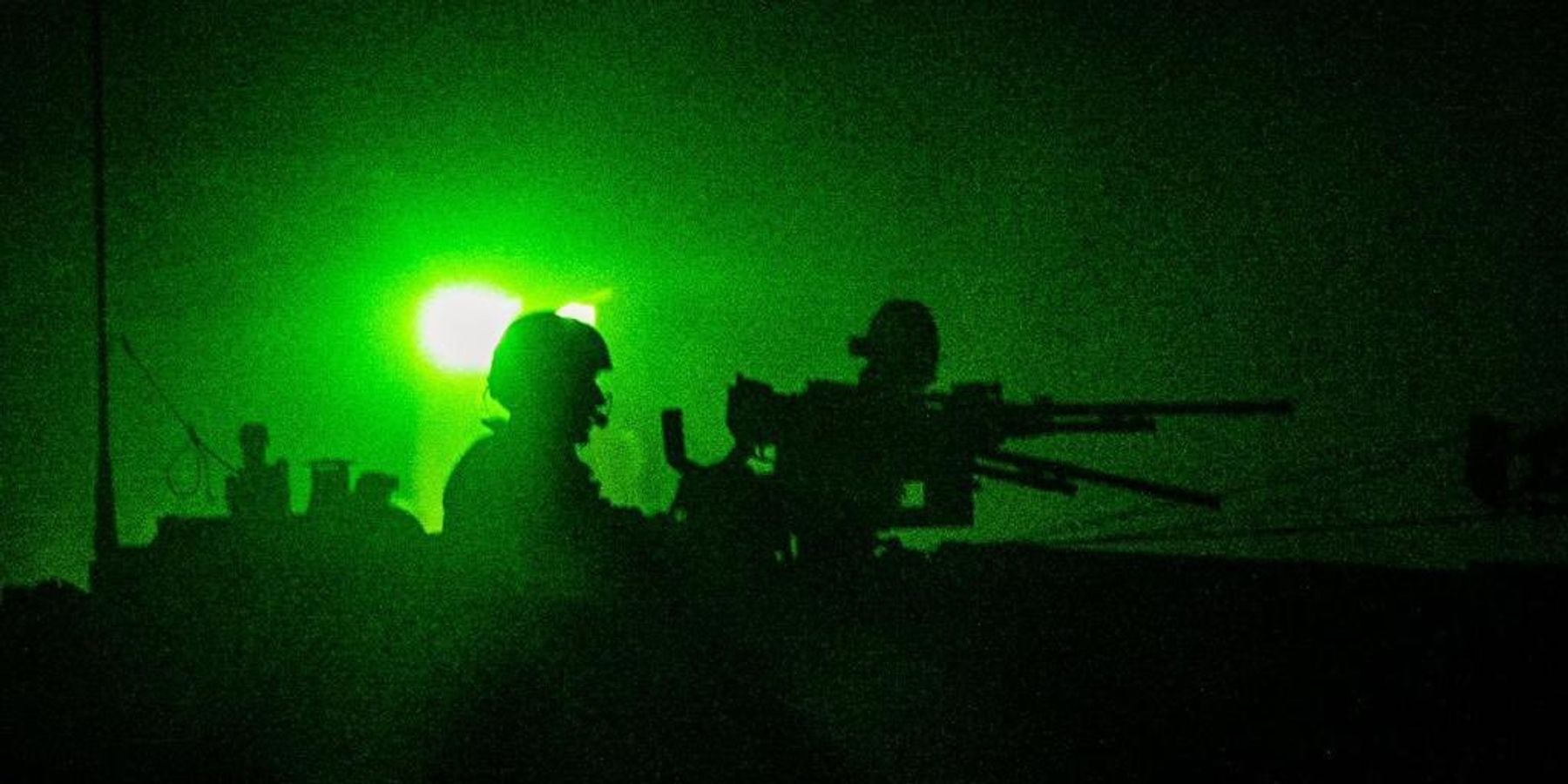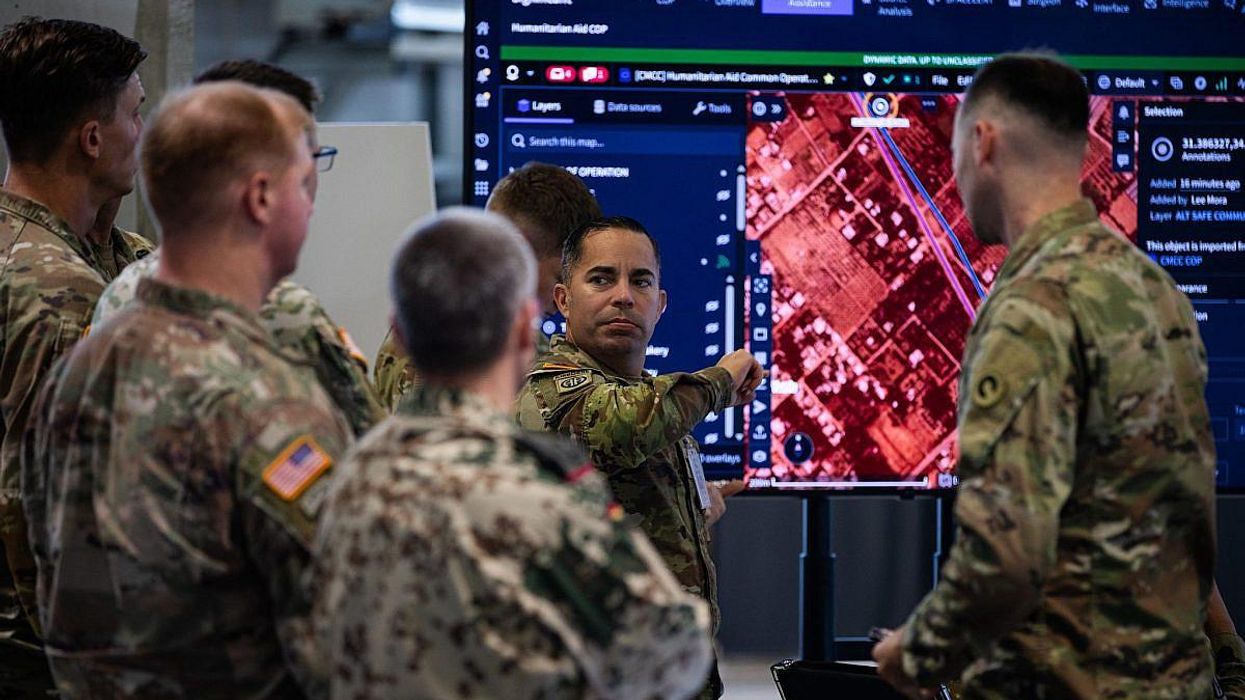The Israeli incursion into Gaza has begun though we do not know yet how full or advanced it will become. But it is reminding us already that war, especially urban combat, is indeed hell.
So what will this ground invasion actually look like on a tactical level?
Gaza proper is roughly 25 miles long and on average 5.5 miles wide. This is a tiny amount of space in which to conduct a large-scale military operation. Most modern artillery can almost shoot the length of Gaza. Most modern anti-tank missiles can shoot half its width. Israeli F-16s can fly the length of the strip in under three minutes and will find it necessary to be in a constant turn to maintain position over Gaza City.
To make the range issue worse is the urban nature of the battlefield. While it might only be around five miles wide, it's highly unlikely that you have line of sight that far due to man-made obstacles — better known as buildings. What this means is no one has superior range. If you can see it, it’s in range. If it’s in range, so are you.
The majority of this space in fact is covered in buildings — shops, offices, schools, hospitals, and residences. Each one provides cover and concealment for fighters. The structures also create natural channels funneling attacking forces into pre-designated fire zones for ambushes or over top of improvised explosive devices.
Israeli armor can’t conduct maneuver warfare on this battlefield. Armor will be sitting ducks without infantry support. Infantry are vulnerable to everything. The Israelis will take losses, and already have, according to the New York Times on Wednesday.
Urban areas pose difficult tactical problems. Fortified urban areas are worse. Over the past decade Hamas has developed a labyrinth of tunnels that are fortified and connected literally across the entirety of the strip, and especially heavy in Gaza City. They use these underground structures for command and control, movement, logistics, shelter, and as a way to “out flank” and ambush an enemy.
Fortified urban areas with significant population density pose the biggest challenges. The majority of combat will take place in Gaza city proper which has a greater population density than New York, Chicago, Boston, Philadelphia or San Francisco. There are over two million people living in an area roughly twice the size of Washington D.C. This means civilians, or non-combatants, are everywhere. Even if half the population has moved south it will still cause the Israelis immense targeting problems.
In addition, the densely populated area compounds the Israeli problem of target identification. Hamas intentionally blends in with the civilian population.
The bottom line for the battlefield is that it helps Hamas and hinders the Israelis. In urban warfare, the defender, in this case Hamas, has the advantage. An advantage that can be mitigated if the attacker has overwhelming firepower, and the will to use it.
How Hamas will fight
Hamas will use the urban terrain to cause excessive Israeli casualties while forcing them to injure civilians to limit those casualties. They will make every block a fortress and every street corner an ambush site. By using the “subterranean flank” they will pop out of tunnels and hiding places in buildings to shoot at Israeli vehicles with missiles, launch grenades, or even throw Molotov cocktails.
While they may not be using Javelin anti-tank weapons (although the threat of Hamas having those weapons shouldn't be dismissed, given what may have been captured or “lost” in Ukraine), their weapons will be more than sufficient to at least disable a tank and cause casualties. The short ranges decrease Israeli reaction time and increase lethality.
Hamas fighters are commingled with the civilian population most likely both intentionally and unintentionally, and will take full advantage of that. They know the world watches what the Israelis do and are counting on pressure to make them stop. Again, they see this war as existential, so they will use any and all means to win.
How the Israelis will fight
First, Israelis must find the Hamas fighters, then engage them in their fortified positions.They must do this without taking unreasonable casualties, all the while trying not to kill civilians.
To find Hamas fighters the Israelis will use a variety of sources. They will have already scanned the electromagnetic spectrum for everything from cell phones, computers, to radios looking for an electronic signature to identify a potential target. They will pour over social media for anything identifiable.They will use drones, manned aircraft, and human reconnaissance teams to confirm and verify what they think they know.
They will do all this and more to listen, collect, and build a targeting picture of command centers, logistics sites, artillery positions, and order of battle — who is who, who has what, and where it is.
This process is called intelligence preparation of the battlefield. This is what the Israelis have been doing — in truth some of their targets were most likely derived long before Hamas attacked just as most certainly Hamas had/has a robust target list of Israeli targets — since the start of hostilities.
The ground incursion of course changes this process. With Israeli tanks and infantry “closing” with the enemy, finding and subsequently engaging Hamas fighters will most likely devolve into merely returning fire — often with zero time to figure out how to limit civilian casualties.
It’s one thing to take a breath and disengage in sparse open terrain, it’s another thing to figure out who is shooting at you.
Once located, the Israelis have a host of options to engage the Hamas fighters. But it’s not a simple task of deciding what weapon is best to use. They have to measure what they do by three metrics: 1) does it achieve the desired effect on the enemy? 2) Can they accomplish the task without losing too many Israeli soldiers? 3) Can they limit civilian casualties, which in excess can be a war loser for Israel?
If civilian casualties weren’t a concern, the Israelis would use their massive firepower to destroy any and all Hamas targets or potential targets. They have the potential to literally level Gaza City using 2,000-pound satellite guided bombs with delayed fuses to smash the known tunnel complexes or at least seal them for eternity. This would meet the goal of destroying Hamas and limiting Israeli losses.
But in reality this approach would cause unacceptable civilian casualties. The inverse would be to advance for a close quarter battle that seeks a more “surgical” path. In a close quarter battle, you do nothing to mitigate the defender’s advantage in urban warfare and you take losses — lots and lots of losses.
Storming a building can be like storming a trench. We have seen what that is like in Ukraine.
So how will the Israelis fight? Their best option for destroying Hamas (which is the first priority), managing their own losses (second priority), and limiting civilian casualties (last priority), will be to strike hard when they have known, verified targets, advance to make contact with the enemy, then choose the weapon to engage. Moving slowly, deliberately, a block at a time.
This is why the prime minister said it would be a long war. This grinds Hamas down through attrition and loss of supply. The longer it takes, the more food, water, and fuel Hamas uses with no hope of real re-supply. The Israelis proclaim this war is existential. They will keep that consideration as they manage the tension of their losses and civilian casualties.
Some suggest this will look like the battle for Fallujah between U.S. forces and Iraqi insurgents. Perhaps. But I suggest it will be more like Stalingrad or Berlin. Like in those battles, both sides see the war as existential and will conduct themselves accordingly.
One thing is for certain, for the populations on both sides, this war is truly hell.
- Danger for US deepens as Gaza crisis escalates ›
- Will US troops be drawn into the Israel-Gaza war? ›
- New Israeli military outposts risk even bigger crisis in Gaza | Responsible Statecraft ›
















